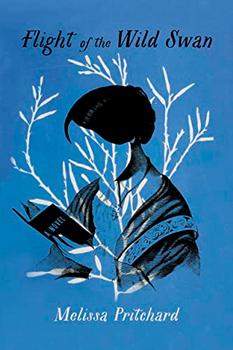Summary | Excerpt | Reading Guide | Reviews | Beyond the book | Read-Alikes | Genres & Themes | Author Bio

 Book Reviewed by:
Book Reviewed by:
Peggy Kurkowski
Buy This Book
BookBrowse Fiction Award 2023
Along the Malabar Coast of South India in 1900, a 12-year-old girl grieving her father's death sets off to a rambling estate called Parambil to marry a man almost 30 years her senior. Three generations later, her granddaughter and namesake begs her for a story about their ancestors and a genealogy "chock-full of secrets." So begins an unforgettable journey of faith, medicine and love in Abraham Verghese's magisterial novel The Covenant of Water.
Mariamma, the young bride, arrives at the 500-acre Parambil farm missing her mother and uncertain of her future. Finding strength in her faith as a Saint Thomas Christian (see Beyond the Book), she throws herself into her duties as a wife and homemaker. As the years go by and she bears a child, her stepson JoJo calls her Big Ammachi ("Big Little Mother"), and the name sticks. She becomes the matriarch and ...

BookBrowse's reviews and "beyond the book" articles are part of the many benefits of membership and, thus, are generally only available to subscribers, including individual members and patrons of libraries that subscribe.
Join Today
If you liked The Covenant of Water, try these:

by Melissa Pritchard
Published 2024
A majestic novel of Florence Nightingale, whose courage, self-confidence, and resilience transformed nursing and the role of women in medicine

by Nguyen Phan Que Mai
Published 2021
Winner of the 2020 BookBrowse Debut Award
The Mountains Sing tells an enveloping, multi-generational tale of the Trần family, set against the backdrop of the Việt Nam War. "Both vast in scope and intimate in its telling ... Moving and riveting." - Viet Thanh Nguyen, author of The Sympathizer, winner of the Pulitzer Prize





The House on Biscayne Bay
by Chanel Cleeton
As death stalks a gothic mansion in Miami, the lives of two women intertwine as the past and present collide.

The Flower Sisters
by Michelle Collins Anderson
From the new Fannie Flagg of the Ozarks, a richly-woven story of family, forgiveness, and reinvention.

The Funeral Cryer by Wenyan Lu
Debut novelist Wenyan Lu brings us this witty yet profound story about one woman's midlife reawakening in contemporary rural China.
Your guide toexceptional books
BookBrowse seeks out and recommends the best in contemporary fiction and nonfiction—books that not only engage and entertain but also deepen our understanding of ourselves and the world around us.